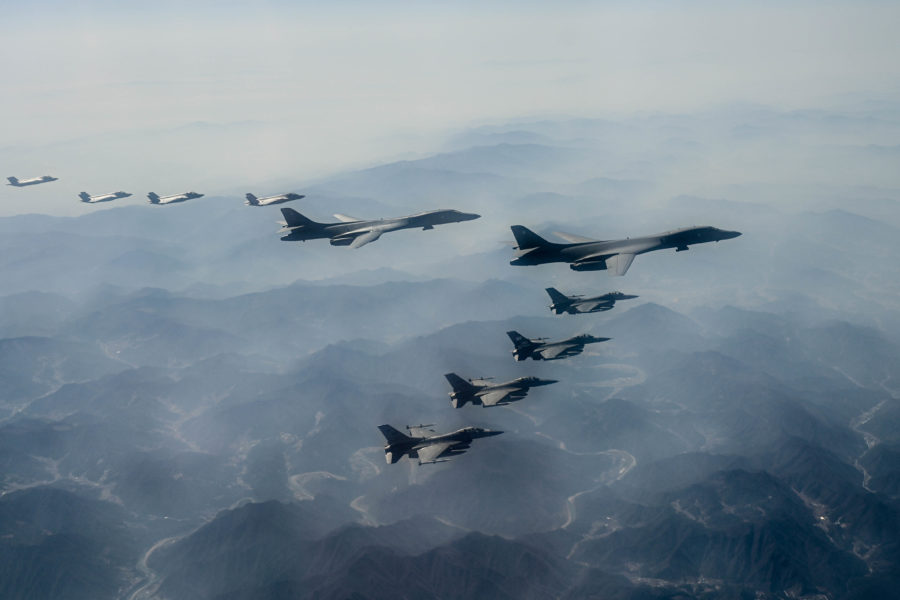A pair of B-1B Lancers flew alongside American F-16s and South Korean F-35s over the Korean Peninsula on March 19, the same day North Korea reportedly launched another missile test off its coast.
The combined air training flight was part of the joint combined exercise Freedom Shield 23, which incorporated both live training and simulated command and control scenarios. That event, which began March 13, coincides with Warrior Shield FTX, the biggest U.S.-South Korean exercise in five years.
Two B-1s from Ellsworth Air Force Base, South Dakota, joined four ROK F-35s and four USAF F-16s from Kunsan Air Base, South Korea, over the peninsula.
“The ROK and U.S. are displaying a robust combined defense posture and showcasing extended deterrence in action,” read a U.S. Forces-Korea press release. “ROK and U.S. forces continue to strengthen interoperability, increase deployment capability of flexible response forces, and increase robust wartime strategic strike capabilities.”
It was the fourth time in the past two months that U.S. B-1s flew with ROK fighters.
- On Feb. 1, two B-1s and F-22 Raptors flew with South Korean F-35s over the Yellow Sea, just west of the Peninsula.
- On Feb. 19, two B-1s flew with F-16s and ROK F-35s through the Korean Air Defense Identification Zone, a buffer area that includes international airspace near the Korean Peninsula.
- On March 3, the South Korean Ministry of National Defense announced one B-1 had flown with South Korean F-15K and KF-16 fighters over the Yellow Sea.
B-1s started flying in the region in November, when B-1s from Ellsworth flew over the Peninsula for the first time in five years. In December and early March, B-52 bombers also flew over South Korea with ROK aircraft, as the U.S. has stepped up presence in the theater.
The U.S. and South Korean governments pledged in January to ramp up joint military exercises during a visit by U.S. Defense Secretary Lloyd J. Austin III, who specifically noted more fighter and bomber missions would take place.
The increased activity is a response to North Korea’s increased missile testing program. North Korea has objected to U.S.-ROK exercises. According to the South Korean news agency Yonhap, “the North’s missile firing came some 25 minutes before a U.S. B-1B strategic bomber entered an operational area of the Korean Peninsula for the allies’ exercises.”
Pyongyang calls the allied exercises as rehearsals for war and routinely urges its forces to prepare for “nuclear war.”
The latest launch came days after another missile test prompted U.S. Indo-Pacific Command to condemn the act in an official statement.
